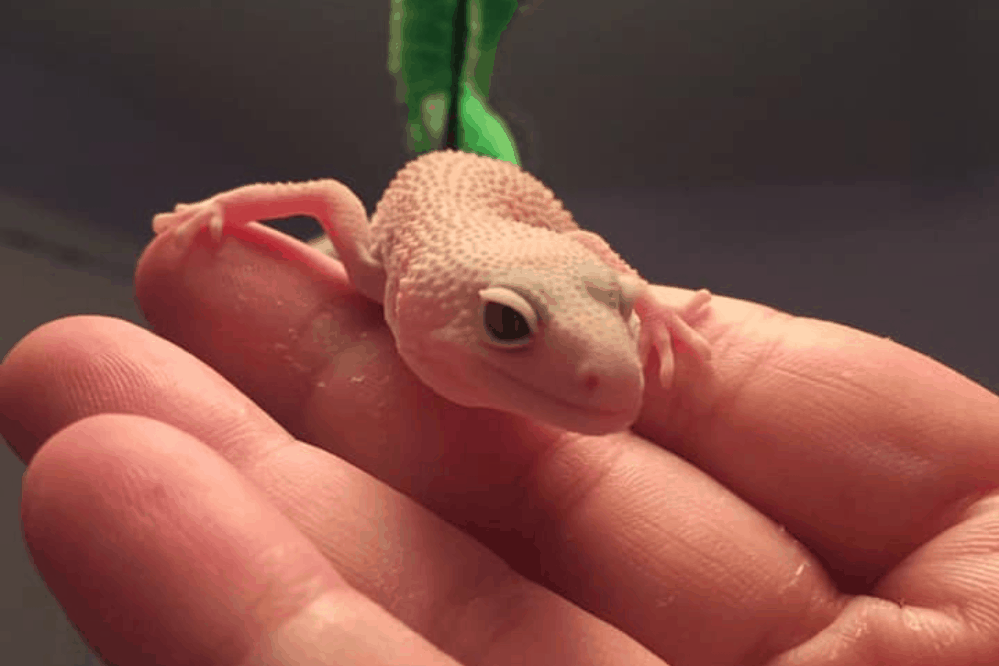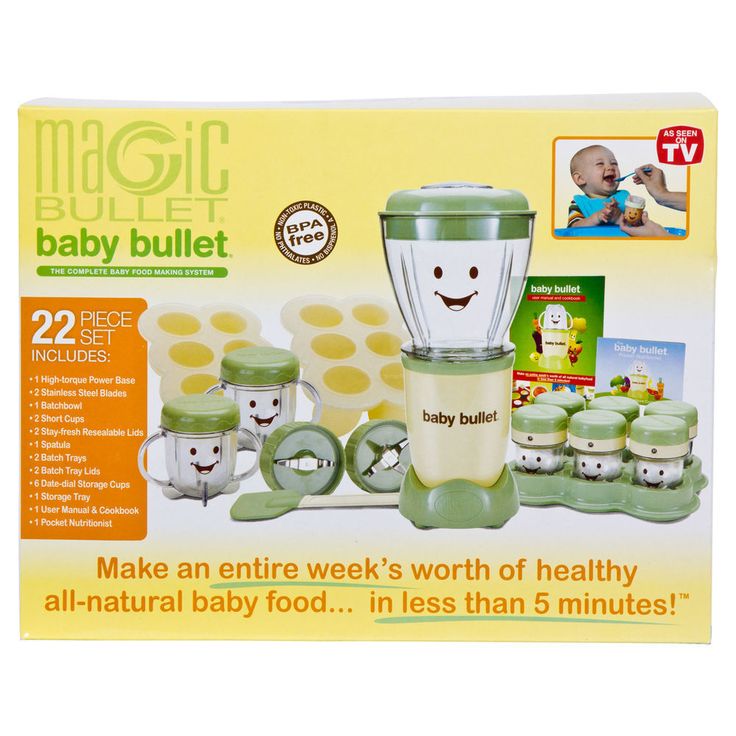What to feed a baby gecko lizard
How to Care for a Baby Gecko | Baby Lizard Care
By Laurie Hess, DVM, Diplomate ABVP (Avian Practice)
Geckos are one of the most popular lizard species kept as pets. Baby geckos can make adorable additions to any family and when housed and fed properly can grow up to be hardy adults that live many years. The key is to educate yourself before you get them so that you can set them up right from the start.
More than 2,000 species of gecko, varying in color and skin markings/patterns, are recognized around the world. Among the most common pet lizard species are leopard geckos and crested geckos. Less commonly kept geckos include day geckos and Tokay geckos.
When they are born, hatchling geckos are typically 3 to 4 inches long. Adult female leopard geckos grow to 7 to 8 inches, while males grow to 8 to 10 inches. Adult crested geckos of both sexes typically are 4.5-5 inches long.
Many pet stores and breeders sell baby geckos so that owners can bond with their pets at a young age and watch them grow. Baby geckos, however, do not have fully developed skeletal and immune systems and are therefore more susceptible than their older counterparts to developing certain diseases. Thus, they must be fed and housed appropriately when they are first purchased to try to prevent the development of common juvenile diseases.
Once their enclosures are set up properly and a feeding regimen has been established, baby geckos can be relatively easy to care for.
Making a Home for Your Baby Gecko
Geckos are typically housed in 10- to 20-gallon glass aquariums. Plastic storage boxes, such as those for storing sweaters, also may be used, as long as the box is at least one-foot high to prevent the lizard from jumping out. Twenty-gallon tanks are better for larger adults or if more than one gecko is being housed in the same tank.
Tanks larger than 20 gallons may be harder to keep warm and humid enough and may enable the gecko to avoid sitting under heat and ultraviolet (UV) lights. All enclosures must have a secure mesh top to prevent escape and to promote good ventilation. A small, upside down, plastic box with a cut-out door, filled with moist moss or vermiculite, can be used within the enclosure as a hide box to help maintain the humidity high enough to enable the gecko to shed its skin properly. Live or artificial plants can be added to the enclosure, as well, to help maintain humidity and to satisfy the gecko’s desire to climb.
All enclosures must have a secure mesh top to prevent escape and to promote good ventilation. A small, upside down, plastic box with a cut-out door, filled with moist moss or vermiculite, can be used within the enclosure as a hide box to help maintain the humidity high enough to enable the gecko to shed its skin properly. Live or artificial plants can be added to the enclosure, as well, to help maintain humidity and to satisfy the gecko’s desire to climb.
Baby Geckos Need Warmth and Humidity
All types of gecko, regardless of species, need supplemental heat in their enclosures. Heat may be provided with an over-the-tank heat bulb or an under-the-tank heat mat placed at one end of the tank. Hot rocks are not recommended, as they can get very hot, and reptiles often don’t move off them before they get burned.
Gecko tanks should have a temperature range with a warm end and a cool end. The ideal temperature range for a gecko depends on the species. Leopard geckos should have a warm zone (containing the hide box) that is about 90°F and a cool zone that is no lower than the low 70s°F.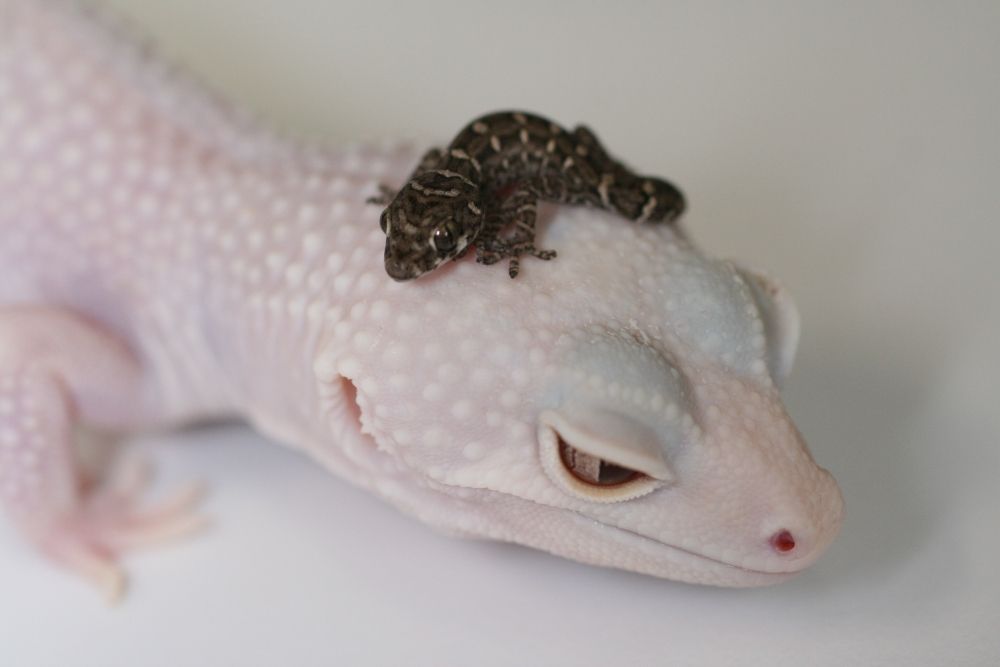 Crested geckos do better at slightly lower temperatures, with the warm zone in the upper 70s to low 80s°F and the cool zone no lower than about 70°F.
Crested geckos do better at slightly lower temperatures, with the warm zone in the upper 70s to low 80s°F and the cool zone no lower than about 70°F.
Tank temperatures should be monitored daily with “point and shoot” temperature guns, available in most pet stores, or with traditional temperature strips or thermometers that stick on the inner walls of the tank. The amount of heat provided may need to be varied seasonally depending on the ambient temperature of the room in which the lizard is housed.
Humidity must be monitored, as well, with gauges called hygrometers. Ideally, humidity should be maintained between 50-70 percent to ensure that lizards are hydrated and shed their skin properly. Daily misting of the tank helps to keep humidity adequate.
Most gecko species are nocturnal in the wild, being active at night, so they are not exposed to a great deal of sunlight. Consequently, some reptile breeders and veterinarians feel that geckos do not require UV light. Provision of UV light to geckos is, however, controversial, and certain veterinarians (including this author) feel that geckos do better and are less likely to develop common skeletal diseases, such as metabolic bone disease, when they are exposed daily to a few hours of UV light from a full-spectrum UV bulb, particularly if they are housed completely indoors.
While geckos in the wild may live on sand or soil, these substrates are generally not recommended in a pet gecko’s enclosure, as the animal may inadvertently ingest them and develop gastrointestinal impactions or obstructions. Paper-based bedding, such as recycled paper pellets typically used for guinea pigs and rabbits, or shredded newspaper, are better, since they are digestible if consumed.
For a more natural look, pieces of reptile carpet, sold in pet stores, may be used as bedding; however, reptile carpet must be changed frequently, as it gets soiled with food and feces quickly.
What to Feed to a Baby Gecko
Leopard geckos are carnivores; they don’t eat plants or other vegetable matter but rather live insects such as mealworms and crickets. Crested geckos eat small amounts of fruit in the wild in addition to insects.
Baby geckos can be offered small crickets and mealworms daily. Insects, in general, should be no bigger than the width of the gecko’s head. When lizards get closer to adult size, they can be fed insects every other day and be offered larger insects, such as waxworms, superworms, and Dubia roaches.
When lizards get closer to adult size, they can be fed insects every other day and be offered larger insects, such as waxworms, superworms, and Dubia roaches.
The insects you are feeding to your gecko should be fed a diet that has been fortified with calcium, vitamins, and minerals (a process called gut-loading) before being offered to the geckos so that the lizard is getting balanced nutrition. If you are raising your own insects for feed, the insects also should be lightly coated with calcium powder three times a week, calcium powder with additional vitamin D3 twice a week, and a mineral supplement once a week, before being fed to the gecko.
Insects can be provided to baby geckos in small shallow dishes into which geckos can climb to eat them. If a baby lizard is too small initially to climb into the dish, it can be hand-fed one insect at a time until it grows large enough to eat on its own. Only the number of insects a gecko will eat in one sitting should be offered at a time, or leftover insects may chew on the lizard’s skin. In addition, geckos should be fed fresh water daily from a shallow dish from which they can drink. The dish of water will also help to increase ambient humidity as the water evaporates.
In addition, geckos should be fed fresh water daily from a shallow dish from which they can drink. The dish of water will also help to increase ambient humidity as the water evaporates.
Crested geckos, like leopard geckos, also eat insects, but they can be fed a product called Repashy Superfoods Crested Gecko Diet as their main diet to reduce the need for insects. This diet is mixed with two parts of water, and the gecko is offered as much of this mixture as it will eat out of a shallow dish in one sitting three times a week. The mixed diet can sit in the enclosure for up to 24 hours before it should be removed. Crested geckos eating Repashy may be offered insects once a week along with small amounts of fruit (such as banana or mango) or fruit baby food from a jar as a treat.
How to Hold a Baby Gecko
Baby geckos can be very skittish, so handling them when they are little can help acclimate them to touch and make them less afraid. However, until they are at least three inches long, they can be injured when they are handled, so it is better to let them grow a bit before picking them up regularly.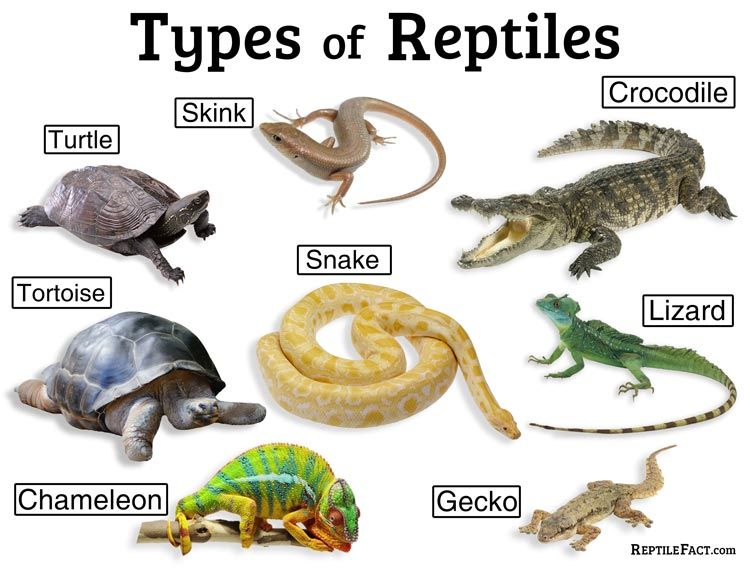 Also, for the first two weeks after they are introduced into a new enclosure, it is best not to handle them so that they can adjust to their new home. After that, 5 to 15 minutes a day of handling should be enough to get them used to being held but not too much to stress them.
Also, for the first two weeks after they are introduced into a new enclosure, it is best not to handle them so that they can adjust to their new home. After that, 5 to 15 minutes a day of handling should be enough to get them used to being held but not too much to stress them.
In addition, reptiles absorb bacteria, other germs, and toxic chemicals through their skin, so it is essential that anyone handling a gecko does so only with clean hands. Conversely, since reptiles carry disease-producing bacteria, such as Salmonella, on their skin that can be transmitted to people during handling, it’s also critical that individuals handling geckos wash their hands thoroughly after touching them.
Finally, since geckos naturally “drop” or release their tails to escape when their tails are grabbed by predators, geckos should never be handled by their tails, or they might break off. Many geckos will regrow their tails if they break off, but the area of the break is susceptible to developing infection, and the new tail may have a completely different color and shape than the original tail.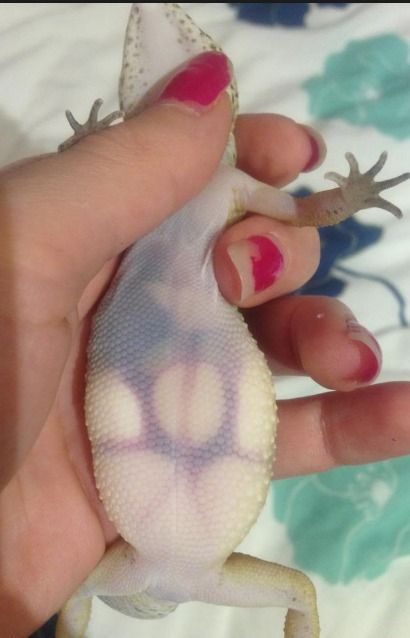 Therefore, it is better to gently hold a baby gecko in the palm of a flat hand while using the other hand to prevent it from jumping or running away.
Therefore, it is better to gently hold a baby gecko in the palm of a flat hand while using the other hand to prevent it from jumping or running away.
The "hand walking" method, in which the gecko, sitting on one extended upright palm, is offered the other extended palm directly in front of it to allow it to hop or jump to the second palm, over and over (think Slinky), also can be used to encourage baby geckos to get used to handling.
What Illnesses Do Baby Geckos Get?
Unfortunately, too many gecko owners do not educate themselves about what their lizards require in terms of housing or nutrition before they bring them home. For example, gecko owners are often not aware they have to gut-load insects or dust them with vitamin and mineral supplements before feeding them to their pets. As a result, baby geckos (particularly those that are housed indoors without access to any UV light that aids in making vitamin D3 in the skin to help absorb calcium from food) can develop metabolic bone disease. In this condition, the calcium to phosphorus ratio in the lizard’s body is typically less than the ideal 2 to 1 ratio. Consequently, their bones never ossify but remain soft and spongy and may fold or fracture. They become weak and stop moving and eating. When untreated, these animals often die.
In this condition, the calcium to phosphorus ratio in the lizard’s body is typically less than the ideal 2 to 1 ratio. Consequently, their bones never ossify but remain soft and spongy and may fold or fracture. They become weak and stop moving and eating. When untreated, these animals often die.
Gecko owners who see any of these signs in their pets should bring them to the veterinarian as soon as possible to start treatment with calcium and vitamin D. With early therapy, these animals can make a full recovery.
Another disease common in baby geckos is life-threatening gastrointestinal (GI) impaction and obstruction with sand bedding. These little lizards inadvertently consume bits of sand as they ingest insects, and sand gradually accumulates in the GI tract until an obstruction ensues. These pets stop eating, become weak, strain to pass stool, and eventually stop passing it altogether. Lizard owners who see these signs should have their pets treated by a veterinarian immediately.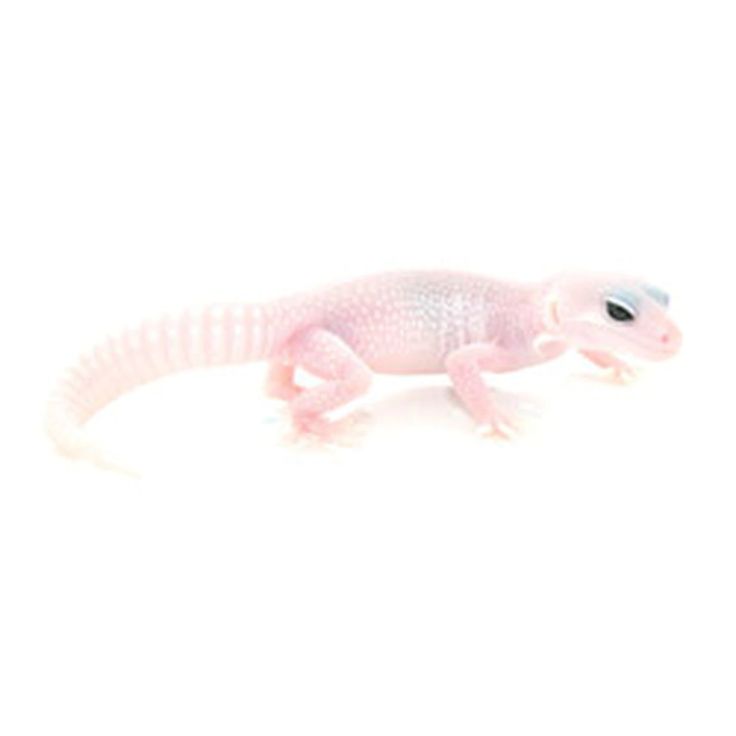 With subcutaneous fluids, enemas, and oral laxatives, many of these lizards can be saved.
With subcutaneous fluids, enemas, and oral laxatives, many of these lizards can be saved.
A final disease that occurs commonly in baby geckos is retention of shedding skin from lack of humidity. Geckos that are kept at too low humidity get dehydrated and retain patches of skin around their toes (where it can constrict circulation, leading to loss of digits) and around their eyes (where it interferes with their vision and their ability to catch insects). As a result, they stop eating, lose weight, and often die. Early intervention by a veterinarian to extract shed skin stuck in eyes, to rehydrate the pet, and to start force-feeding until the animal eats on its own, can make the difference between life and death.
Related
7 Terrarium Dangers for Reptiles
What Do Baby Geckos Eat? (Diet, Facts & Feeding Tips)
Having a lizard for a pet feels strange to a lot of people but if you’ve ever done it before, you know how adorable, rewarding, and easily manageable these animals actually are as pets. Especially once you get their environment right, caring for a gecko becomes as simple as just keeping it’s the temperature and humidity in its enclosure right and giving it enough food and water to thrive.
Especially once you get their environment right, caring for a gecko becomes as simple as just keeping it’s the temperature and humidity in its enclosure right and giving it enough food and water to thrive.
The crucial period of the whole experience is the early few weeks, however – that’s when you need to work a bit extra hard to make sure everything is in order but that’s also when the gecko is still a baby and will require extra care too. So, let’s go over what do baby geckos eat and how to raise your pet properly.
Table of Contents
- Baby gecko facts
- What do baby geckos eat in the wild?
- What do baby geckos eat in captivity?
- How to care for a baby gecko?
- Conclusion
Baby gecko facts
With over 1,500 species of gecko on the planet, many of them share similar features but also have quite a few key differences.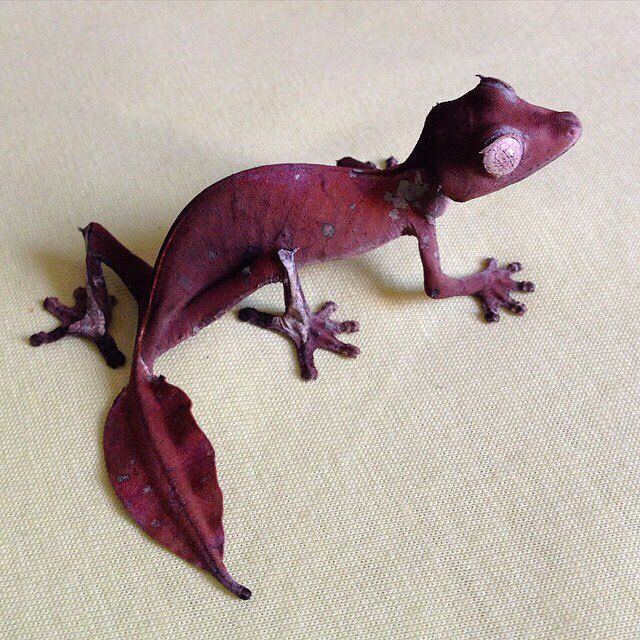 This becomes extra important when you have to look after baby geckos as every little mistake in their feeding habits or environmental requirements can lead to health problems.
This becomes extra important when you have to look after baby geckos as every little mistake in their feeding habits or environmental requirements can lead to health problems.
So, let’s go over some key facts about adult and baby geckos:
- The many species of geckos can come in various sizes – the tiny dwarf gecko is just about 0.6 inches (1.6 cm) long as an adult and even tinier as a baby. It also weighs only 0.0042 ounces or 120 milligrams whereas some sub-species of the New Caledonian giant gecko can grow up to 14 and 17 inches long (35 to 43 cm) and can be as heavy as 10 ounces (up to 280 grams). Those figures are all for adults too so looking after a baby gecko of a small species can be even trickier.
To be a bit more precise, this is how the different species of geckos are classified:
- The Eublepharidae family and its 6 genera and 30 species
- The Phyllodactylidae family with 11 genera and 117 species
- The Diplodactylidae family with its 19 genera and 117 species
- The massive Gekkonidae and its 52 genera and 950 species
- The Pygopodidae known for its 7 genera and 41 species
- The Carphodactylidae family which includes 7 genera and 28 species
- Lastly, the Sphaerodactylidae family with its 11 genera and 203 species
These seven families all fall within the Gekkota suborder, Squamata order, and the Reptilia class.
- Geckos live in six out of the seven continents with the only exception being Antarctica. This means they are acclimated to various habitats such as deserts, rainforests, mountains, and more. This means that setting up your reptiles’ enclosures should be done with a lot of care and attention to the exact species and needs of each particular species, especially when they are still young.
- Geckos are nocturnal so you shouldn’t expect much activity from them during the day nor should you feed them when the sun’s out. This also makes them a great choice for people who are at work or at school for most of the day and want to rather interact with their pets in the evenings. Naturally, it also means that you should feed your gecko in the evening.
- Geckos are both “water-proof” and bathe very easily – their skin is covered with a great number of hair-like spines that trap air and create a water-proof barrier similar to car wax or couch protective spray.
 This means that geckos don’t get overly wet and drenched with water, however, they still get cleaner when they bathe because the water does get close enough to their skin to wipe off dust and contaminants.
This means that geckos don’t get overly wet and drenched with water, however, they still get cleaner when they bathe because the water does get close enough to their skin to wipe off dust and contaminants. - The tail of geckos is often used as extra fat storage for when they can’t get enough food. This allows most species of geckos to survive without food somewhere between 10 and 14 days, although there is really no good reason to test your pet in such a way.
- Geckos are generally omnivores with most eating insects, fruits, and flower nectar. However, you should keep in mind that different geckos have different dietary preferences with some species being strictly carnivores and unable to eat fruits or flower nectar. So, you should be fully aware of what specie of gecko you have and what it needs to be fed with exactly.
- Female geckos can be pregnant with their eggs for years before giving birth. This is rather unusual for such a small animal. However, it also means that the newly hatched geckos are pretty big for newborns.
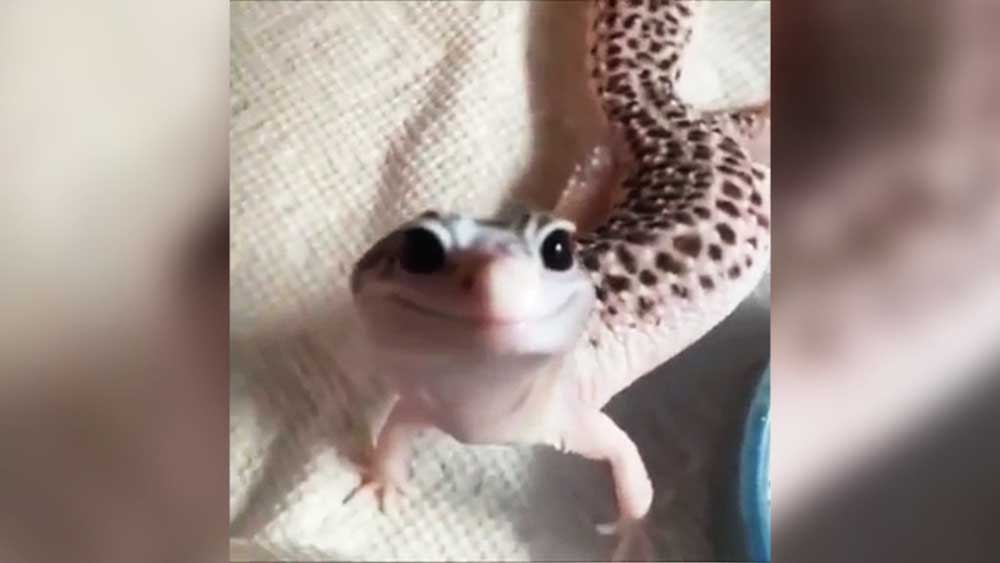 For example, the hatchlings of the leopard gecko can be as long as 3 or 4 inches (up to 10 cm).
For example, the hatchlings of the leopard gecko can be as long as 3 or 4 inches (up to 10 cm). - Geckos are famous for being able to snap their own tails when chased by a predator to distract them and get away. This useful defense mechanism comes with the added benefit that geckos are capable of regenerating their tails over time. While this ability is awesome in the wild, it’s still recommended not to pick up or pull your gecko by the tail, nor to threaten it enough to detach its appendage.
For one, there’s no point in caring for a pet if you’re going to terrify it that much. Additionally, growing a tail is not 100% guaranteed to be successful as the open wound can occasionally develop infections and lead to health issues. Plus, it’s common for the regrown tail to be a different color or to grow at a weird angle.
Most gecko species have sticky feet that allow them to climb on smooth surfaces. That’s why your gecko’s tank should always have a well-secured mesh covering at the top to prevent escapes and accidents.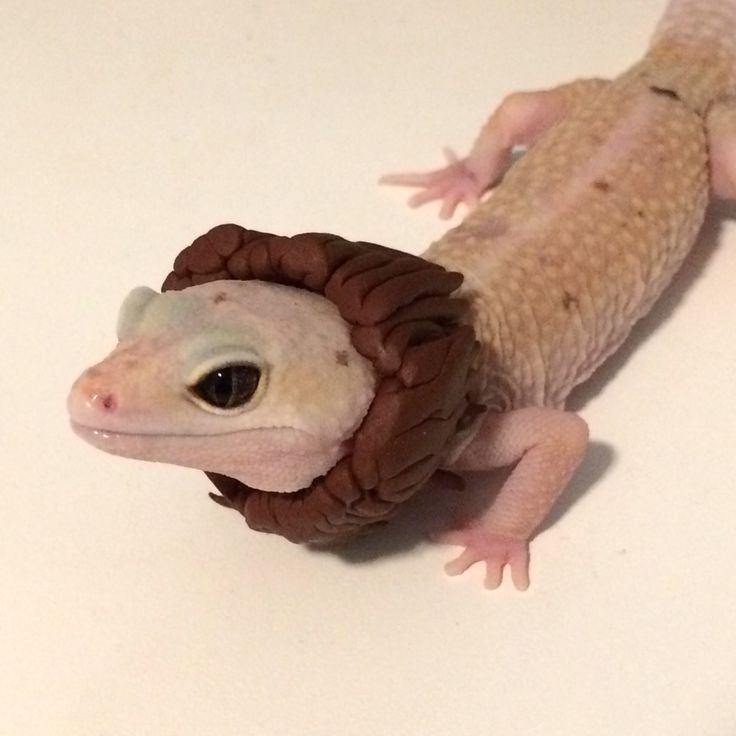
- Like many other reptiles, geckos need to periodically shed their skin as they grow. This shedding usually happens once every 4 to 8 weeks depending on the particular species and its age. During that process, the gecko will likely be hiding somewhere in its tank as it’s feeling vulnerable. Babies and juveniles will naturally shed more often as they are growing faster. It’s important to make sure that you don’t “help” your gecko physically as you’ll be very likely to accidentally hurt it. Instead, it’s best to just make sure that your pet’s habitat is as perfect as possible so that it can go through these natural processes as smoothly as possible.
What do baby geckos eat in the wild?
Baby geckos in the wild will typically eat the same types of food as their adult counterparts – they will just go for smaller sizes and safer prey. This is one of the many big advantages of the long pregnancy of female geckos – because their offspring is extra larger, baby geckos aren’t really “babies” – they are basically young adults by the time they hatch.
Of course, they are smaller than adults so they can’t quite catch, overpower, and kill all the same types and sizes of prey. They are also more vulnerable to predation themselves, as well as from physical trauma and diseases, all of which are to be expected from newborn babies, be they large or not.
So, what do baby geckos eat in the wild? The omnivore species that eat not just insects but also fruits and flower nectar will eat whenever they can get access to it. As for the insect prey – both omnivore and carnivore geckos will try to eat insects whenever they can too, just as smaller and safer ones.
This means that gecko hatchlings in the wild can prey on any of the following:
- Crickets, small grasshoppers and spiders, small cockroaches, and other insects small enough for the particular species of the baby gecko to safely catch and eat
- Hornworms, mealworms, wax worms, superworms, and other worms
- Insect larvae of all kinds, be they of flies, beetles, or anything else
The more geckos grow in the meantime, the larger their prey gets as well.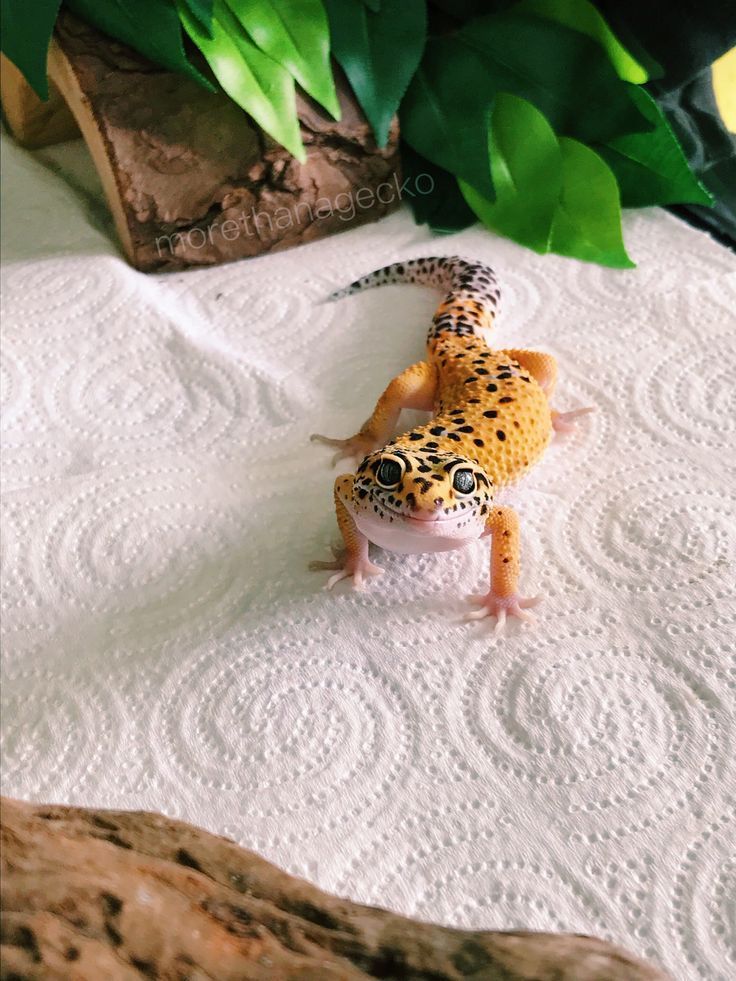 For larger species of geckos, adults can often go even for small birds and mammals when they grow large enough.
For larger species of geckos, adults can often go even for small birds and mammals when they grow large enough.
What do baby geckos eat in captivity?
Owners of baby geckos are spoiled for choice when it comes to choosing their diet. Omnivore baby gecko species such as the bearded gecko, the crested gecko, and others can be fed a combination of commercial gecko food, pieces of fruits and veggies, as well as insects.
The fruits can include pieces of apples, mango, and anything else, especially if it’s native to that species of gecko. Omnivores can also easily be fed commercial food mixtures that usually just need to be mixed 1-to-2 with water and placed in the gecko tanks on a small plate. Such food effectively resembles flower nectar from the gecko’s point of view which is perfect, especially since the mixture is made to have all the nutrients, vitamins, and minerals the gecko needs.
For carnivore species such as baby leopard geckos, you will need a strict insect & worm only diet. What complicates things a bit further is that most gecko species will refuse to eat pre-killed prey and will need living prey to chase and catch.
What complicates things a bit further is that most gecko species will refuse to eat pre-killed prey and will need living prey to chase and catch.
So, you’ll find that your baby leopard geckos eat prey such as wax worms, Dubia roaches, silkworms, and other insects and worms that are just big enough to fit in the baby gecko’s mouth but not larger than that. As the gecko grows, you can start letting bigger prey in the gecko’s enclosure.
How to care for a baby gecko?
The name of the game with taking care of a baby gecko is building the right environment for it. Baby geckos are generally healthy and sturdy enough to survive easily in their natural environment as long as it has the right properties. This means researching the particular species you have and picking the right tank size, substrates, temperature, humidity, light, and food for it.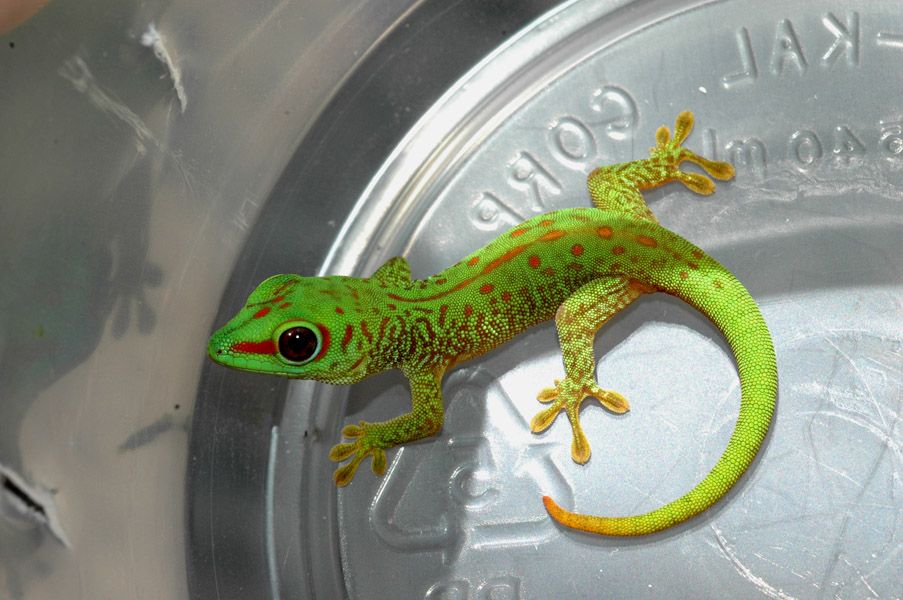 Do that, and the rest is a matter of just monitoring your gecko’s health.
Do that, and the rest is a matter of just monitoring your gecko’s health.
How to feed your baby gecko?
When having to feed geckos, the quality of the food is crucial. For insects, this usually means gut-loading them with calcium and other supplements such as vitamin D3. You can get insects from outside or from pet stores but a good supplement load is usually important either way just as it’s good to dust the insects with calcium powder. This is done to ensure that your gecko’s food is as nutritious and healthy as possible.
If this sounds like too much trouble, you can also get a non-carnivore gecko and feed it commercial foods that are much easier to deal with – then it’s just a matter of giving the right quantity per meal/day.
How often should you feed your baby gecko?
While most adult geckos can be fed just 2 or 3 times a week, most baby geckos need to be fed every day. For a baby leopard gecko, for example, this means 5 to 7 small crickets given to the gecko every day.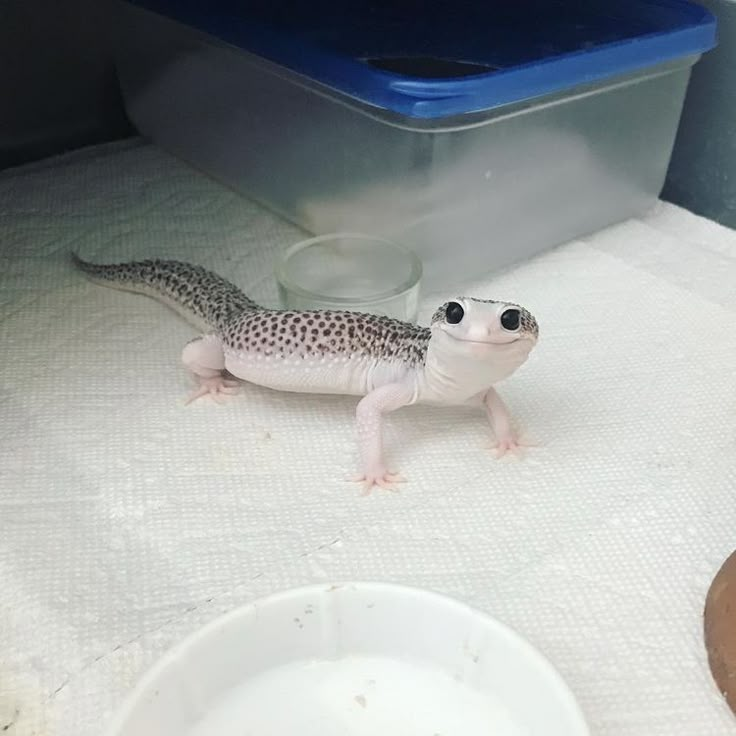 The crickets need to be given one by one as you never want extra live insects in your gecko’s tank before it’s done with the previous prey.
The crickets need to be given one by one as you never want extra live insects in your gecko’s tank before it’s done with the previous prey.
For omnivore geckos of other types, you can diversify the menu with fruits, veggies, and commercial food but the diet should still include several good meals a day for the first few months until the gecko is officially an adult.
What if my baby gecko not eating?
There are two main things to consider if your baby gecko is not eating:
- Maybe you’re not giving it the right food (fruit to a carnivore, prey that’s just too big, etc.) and you should pick different treats
- Your baby gecko may be falling sick, in which case you’d do well to contact your vet as soon as possible
Even if the issue is just that you’re giving your gecko the wrong food, that issue too should be rectified quickly as you don’t want your baby pet to go on malnourished. But if you suspect an illness, the problem is even more urgent. The best course of action is to just call your vet immediately and consult with your vet – they should tell you on the phone what symptoms to look for with your particular species – color and condition of the skin, behavior, color of excrements, etc.
Conclusion
All in all, while there are a few potential pitfalls you’ll need to be careful with, raising a baby gecko isn’t all that difficult, especially compared to some other more common pet types such as puppies and kittens. Once you’ve got the gecko’s environment just right, you’ve learned how to handle it, as well as what and how to feed it, the rest is just a matter of repetition and watching out for potential but rare health issues. That, and enjoying your pet, of course!
What do lizards eat at home
Share the article:
A lizard as a pet is not uncommon these days. However, choosing a reptile suitable for keeping in an apartment and properly equipping its home is only part of the concern.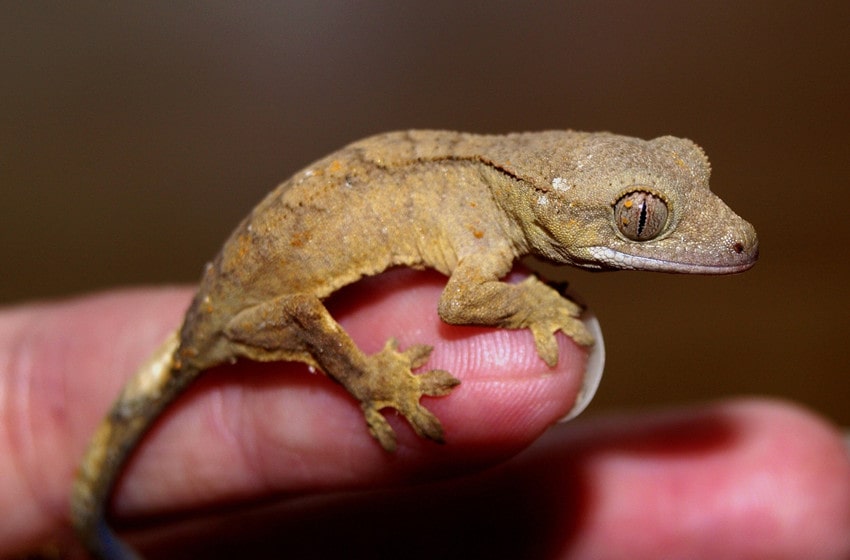 Proper nutrition is essential for proper growth and development. But how to do that? After all, different types of lizards eat differently. Let's figure it out.
Proper nutrition is essential for proper growth and development. But how to do that? After all, different types of lizards eat differently. Let's figure it out.
Contents
- What lizards eat in nature
- What kind of animal food can be used at home
- What kind of plant food can be used at home
- Nutritional formula and supplements
- How to feed and water
- What not to feed
- Each species has its own food
What lizards eat in nature
Most of them are carnivores and feed on insects, worms and small vertebrates.
- Larger lizards sometimes hunt fish, they can catch other lizards, amphibians, snakes, birds, mammals.
- They are not averse to eating bird eggs.
- Sometimes they go on a voluntary diet, eating only plant foods for a while.
There are much fewer herbivorous reptiles than predators, and they are not "pure" vegetarians, as they periodically switch to a carnivorous diet.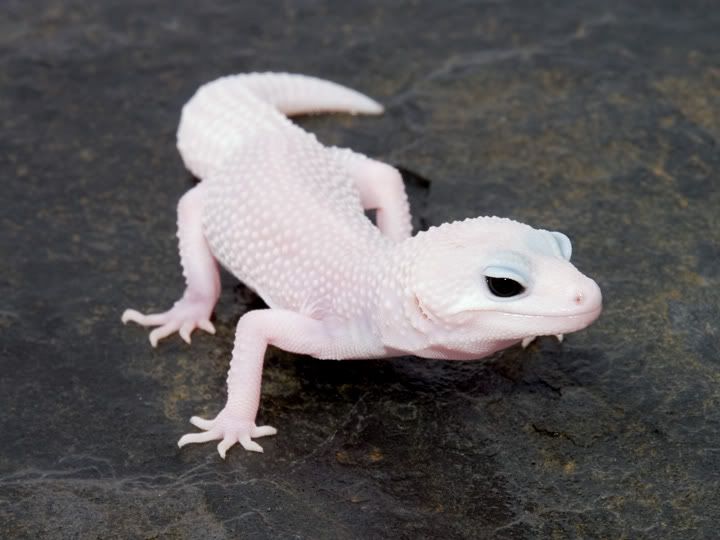
Thus, most of these creatures can be considered omnivores.
Which animal food can be used at home
This type of food should form the bulk of the diet. You can use flies, bloodworms, grasshoppers, locusts, earthworms. So that they do not scatter around the terrarium, it is better to give them with tweezers.
- Meal worms are also useful (they first need to crush the head with tweezers).
- Some lizards do not disdain Maybugs. But in general, it is undesirable to feed beetles, since they have too hard cover.
- Cockroaches are also not recommended as food, as they are too nimble.
- You can try to give American ones, after tearing off their paws.
If the lizard is large, then mice, small rats and other rodents, newly hatched chicks will do. Infrequently, you can give small or chopped fish, lean raw meat without bones, eggs of birds.
Connoisseurs also advise feeding with cottage cheese left in the feeder, or laid out on plant branches and stones.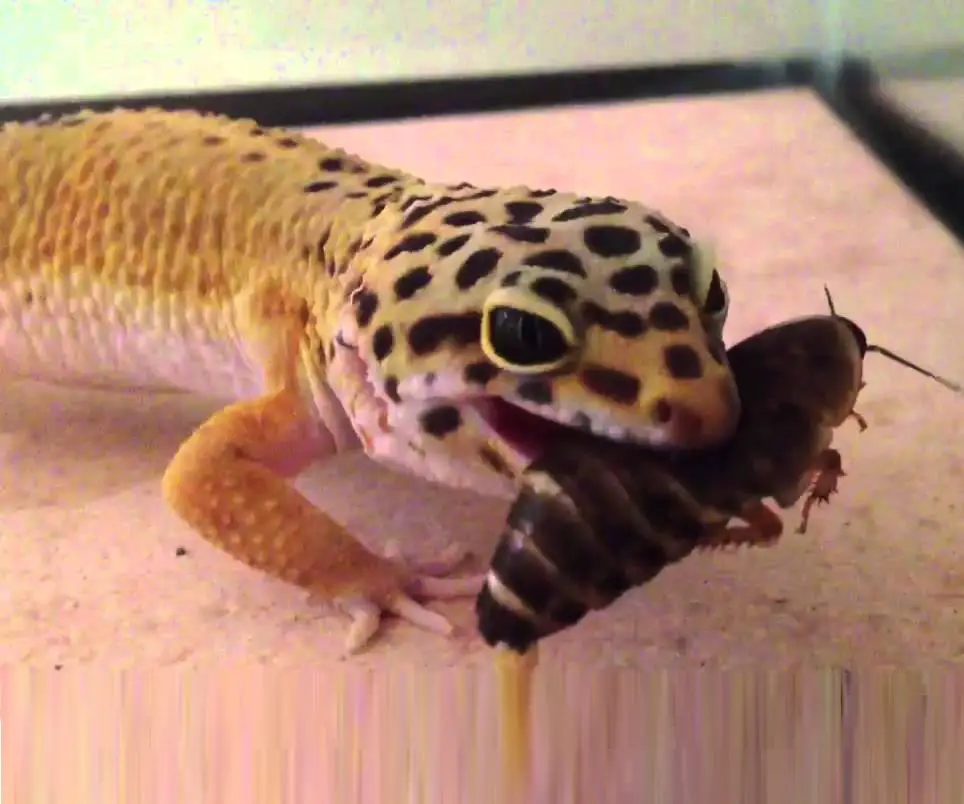
Which herbal food can be used at home
This type of food makes up about a third of the total diet. You can treat:
- Greens - lettuce, parsley, plantain, spinach, clover, dandelion, etc.
- Vegetables - cabbage, broccoli, zucchini, cucumbers, carrots, raw potatoes (rare).
- Fruit - apples, pears, melons, grapes, citrus fruits.
Here you can experiment with your pet's preferences.
Nutritional formula and supplements
You can make your own nutrient mix, which lizards love. To do this, you need meat and carrots (1: 1). The meat must be ground in a meat grinder, and the carrots must be grated. Next, mix it all up, add a little lettuce, calcium, vitamin supplements. The nutrient mixture is ready.
Vitamins and minerals are necessary for the health, bright appearance, vitality and liveliness of lizards. They are not given in their pure form, but must be mixed with food.
The most commonly used raw egg shells, calcium glycerophosphate tablets, chalk and specialized reptile preparations are used.
How to feed and water
Feeders are best used as Petri dishes, that is, they are transparent and look like low cylinders. They are very convenient to give plant foods.
Animal food is given with tweezers or also placed in the feeder. Gastronomic novelties should be introduced gradually, gradually adding to already familiar products, otherwise they may be abandoned.
The frequency of feeding for young lizards is twice a day, and for adults - once. Food is given during the period of greatest activity of the pet during the day or at night.
Unfinished food is removed from the terrarium. If the lizard refuses to eat, but at the same time it drinks and is active, then there is no need to panic, as it unloads its body.
A drinking bowl is a must in the terrarium. For her, it is better to take the most stable container so that the pet cannot turn it over.
Water should be changed daily to keep it fresh and clean.
Some lizards prefer to lick drops of water from plants, so they will need to be sprayed regularly.
What not to feed
Of course, these are dishes from the human table, which are absolutely not suitable for lizards.
- You should not get too carried away with the mealworm, as it loses to other foods in terms of vitamin-mineral ratio.
- Do not give cockroaches caught in the apartment, on the site, etc., as they can be poisoned.
- Insects collected in the field are also not a good idea, because they may be laced with pesticides.
- Maggot is the easiest to find, but it cannot be given to reptiles categorically, since it has external digestion and lizards are easily poisoned by it.
- Cabbage should not be given to herbivorous reptiles as it depletes calcium from the body. Also, it is undesirable for pets to give out-of-season vegetables and fruits, since these products often require a high shelf life, therefore they are treated with various chemicals that the animal body may respond negatively to.
You need to be prepared for the fact that the lizard will not eat immovable food objects, so the insects must be alive or half-dead.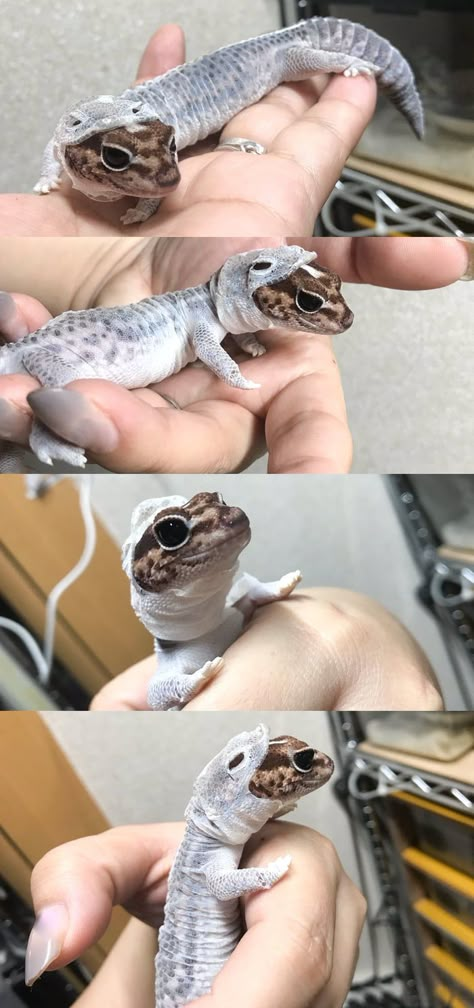
So, we have considered the general issues of feeding lizards in captivity. And now let's briefly go over the preferences of some of the individual species that are most often kept in the home.
Each species has its own food
Agile lizard in natural conditions eats small snakes, spiders, grasshoppers and insects. In captivity, it can be fed flies, crickets, mosquitoes, spiders, cockroaches, flour and earthworms, a nutrient mixture of meat and carrots, fruit and vegetable mixtures.
Chameleons will eat flies, cockroaches, crickets. Don't forget about vitamin supplements. There is a special dry food on sale, but it is better to resort to it infrequently. You can periodically treat your pet with slices of banana, citrus fruits, grapes.
Geckos only accept live food: spiders, crickets, flies, cockroaches, locusts and others, as well as worms (flour and zoofubuses). Large individuals can be fed with mice and naked rats, as well as quail eggs. In the terrarium, be sure to put water and bird stone powder. Dry vitamins and ground calcium are used as deboning for insects daily, and liquid vitamins are given once every week. Bananas, oranges, marmalade and honey are a delicacy for geckos.
In the terrarium, be sure to put water and bird stone powder. Dry vitamins and ground calcium are used as deboning for insects daily, and liquid vitamins are given once every week. Bananas, oranges, marmalade and honey are a delicacy for geckos.
Moloch (thorny dragon or thorny devil) is difficult to keep at home, but he is found in zoos. This Australian lizard feeds exclusively on ants and can eat 600-2500 of them at a time!
Skinks can be fed the same food insects as for the species listed above, supplemented with snails, pink mice, caterpillars, squid, one-day-old minced chickens, pre-mixed reptile food, and even dry dog food. They will not refuse vegetables, fruits, seeds, buckwheat, rice. Occasionally, you can give beef liver and heart (chicken or beef).
Iguana is a herbivore and is very picky about food. In nature, it feeds only on the foliage of trees. In captivity, she can and should be given spinach, kale, turnips, broccoli, and other dark green leafy vegetables. The second half of the diet consists of other vegetables, such as carrots, peppers and sweet potatoes, peas, beans and others. Very useful alfalfa in the form of granules (sold in a pet store). Fruits are recommended to be given infrequently and little by little. Vitamin and mineral supplementation is required.
The second half of the diet consists of other vegetables, such as carrots, peppers and sweet potatoes, peas, beans and others. Very useful alfalfa in the form of granules (sold in a pet store). Fruits are recommended to be given infrequently and little by little. Vitamin and mineral supplementation is required.
Varany . It is believed that they are unpretentious and are happy to eat both fresh food for other lizards and stale game. In captivity, they can be given frogs, mice, chickens, small vertebrates, insects, cockroaches, earthworms, fish, pieces of meat, chicken eggs, etc. vegetable food. These curious lizards can be given hawk hawk pupae and larvae, mealworms, pet shop-bought crickets and cockroaches. From plant foods, agamas can be offered leaf lettuce, pumpkin, cucumbers and other vegetables from the list of allowed foods.
So we found out what lizards eat at home. What can be fed and what is undesirable. We hope that this information will be useful, as a correct and balanced diet directly affects the health and lifespan of these animals.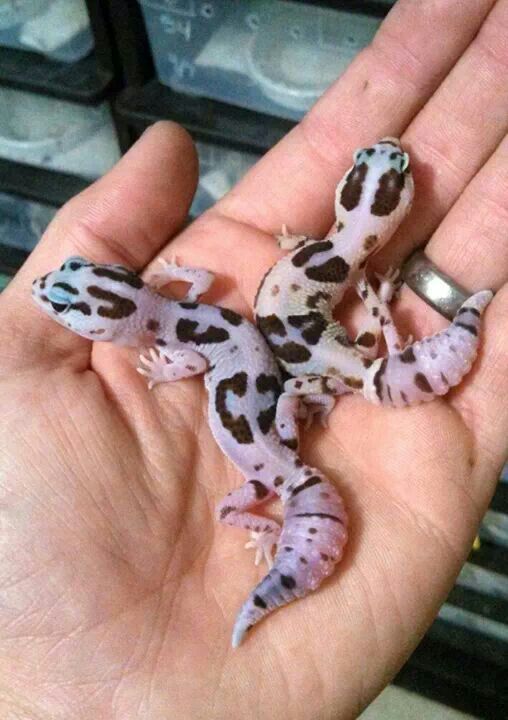
Video from the owner of the lizard about feeding rules:
Geckos love tasty food. They quickly get used to treats and may refuse healthy and healthy food. To prevent this from happening, you need to include a variety of dishes on the menu and adhere to the feeding regimen. We tell you how to do it.
Feeding objects
Gecko food objects are divided into basic and additional. The main ones should be in the lizard's diet from birth. Additional food items include treats that can be added to the diet after the pet is six months old.
Geckos feed on insects and do not refuse newborn naked mice. It is advisable to give your pet live food so that the instinct of the hunter does not disappear. If you choose this option, then remember that you also need to take care of keeping insects at home.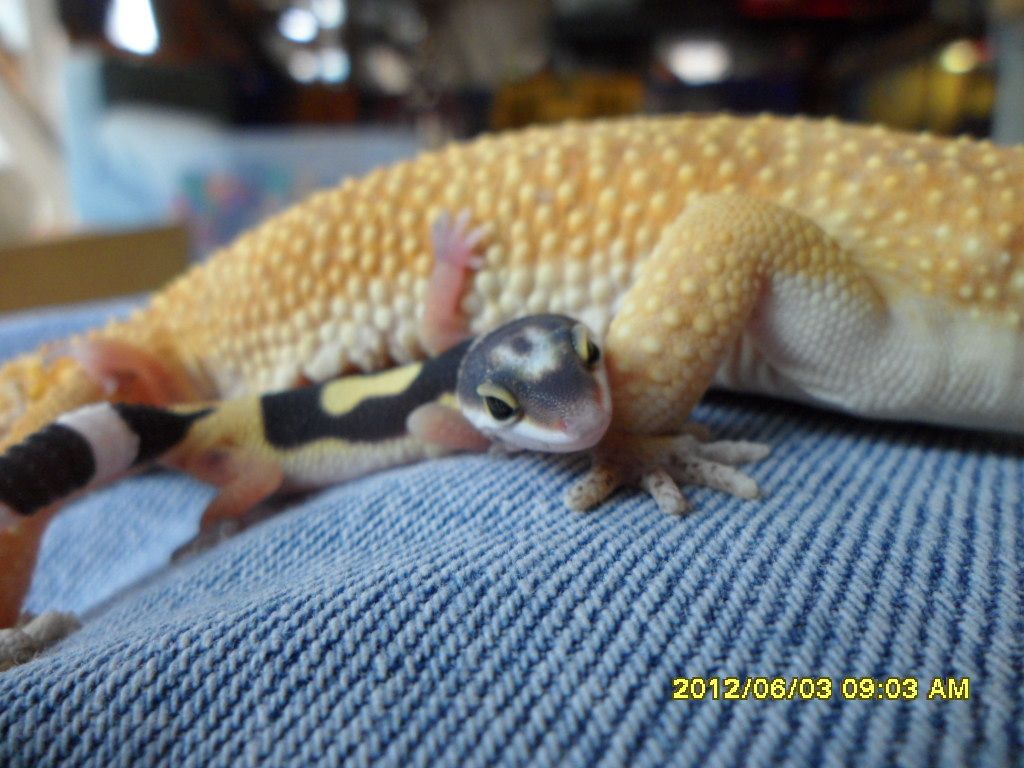 They must be full and active.
They must be full and active.
Another way is to feed frozen food. In this case, it is enough to store food in the freezer, and defrost it immediately before feeding. If the food has lain at room temperature for about 2 hours, it will have to be thrown away. You can not freeze insects again.
Menu
At home, the gecko should eat the same way as in the wild.
Ration
The main menu should include:
- crickets;
- cockroaches;
- locust;
- grasshoppers;
- earthworms;
- butterflies, moths, moths.
You don't have to choose just one. A mono-diet can lead to beriberi and metabolic disorders. If it is not possible to diversify the diet, use ready-made feed additives. They contain the components necessary for proper development.
Where can I get food?
Food and vitamins for reptiles can be ordered in the online store. To grow food yourself, get a separate terrarium for it. Do not feed hungry insects to your lizard, as they bite and can feed on your pet's feces, which will negatively affect his health.
Do not feed hungry insects to your lizard, as they bite and can feed on your pet's feces, which will negatively affect his health.
We do not recommend getting food for the gecko on the street. Together with wild insects, chemicals, helminth eggs, poisons of larvae, etc., can enter the body of reptiles.
What food to choose?
Crickets and cockroaches are the main diet of the lizard. Their share is about 70%. The remaining 30% are treats. For example, spotted leopard geckos love tobacco hawk caterpillars, mealworms, silkworm larvae, etc. Periodically change treats to create conditions close to the wild.
40 g 319 ₽ 293 ₽ 40 g x 2 pcs0003 564 ₽ 40 g x 24 pcs Show all sentences 20 g 233 ₽ 213 ₽ Show all sentences
Power Features
Feeding time depends on the type of lizard. Some are active at night, others during the day. For example, geckos hunt at dusk, at night and at dawn, so they prefer to eat early in the morning or late in the evening. By the same principle, feed currents, striped, viper geckos, etc.
For example, geckos hunt at dusk, at night and at dawn, so they prefer to eat early in the morning or late in the evening. By the same principle, feed currents, striped, viper geckos, etc.
Frequency
Geckos have a good appetite. In their natural habitat, they eat any prey that they manage to catch. Do not overfeed - reptiles have slow digestion. It is important that before the next feeding they have time to digest the previous portion. Young lizards need to be fed more often than adults.
There are two approaches to feeding:
- 1 time in 3-4 days for 5-7 large insects. So the reptile will definitely not overeat, but will remain a little hungry.
- 1 time in 2-3 days, but until full saturation, until the pet refuses to eat.
Babies under 2 months old need daily meals.
How to understand that the gecko is full and happy? Rate his behavior. The pet must be nimble during the period of activity. After overeating, lizards become passive, they have problems with the liver, reproductive system. The state of the pet is easy to determine by the tail. In starving geckos, it is thin, in overeating geckos it is large and interferes with walking. With proper nutrition, the tail looks natural in relation to the body, as in the photo below.
The state of the pet is easy to determine by the tail. In starving geckos, it is thin, in overeating geckos it is large and interferes with walking. With proper nutrition, the tail looks natural in relation to the body, as in the photo below.
Serving sizes
Portions depend on the age and size of the geckos. For a miniature adult animal, 2-3 large crickets are enough. A large lizard needs to eat 10-15 of the same insects. Newborn animals are fed from the 4th day of life 1-2 times a day with small crickets. After 12 months, the cubs switch to a common diet.
Choose the right food. Do not give the animal an insect that is too large for it, which is difficult to digest. We recommend that you follow a simple rule: the length of the insect should not be more than the distance between the eyes of the gecko.
Conditions
Lizards feel more alert if they can hunt. To create such conditions for them, purchase a terrarium with a tight-fitting lid.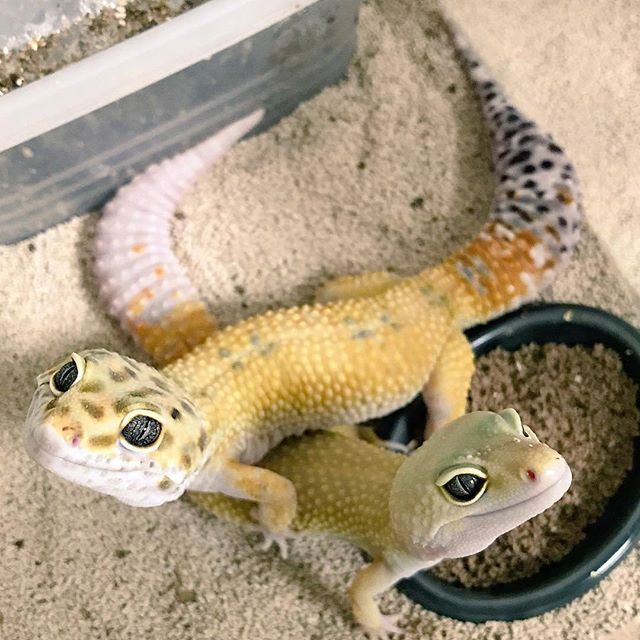 Then the crickets, cockroaches and moths will stay inside. But the gecko can live peacefully without hunting. Simply feed it defrosted insects with tweezers. The animal will be interested in such food.
Then the crickets, cockroaches and moths will stay inside. But the gecko can live peacefully without hunting. Simply feed it defrosted insects with tweezers. The animal will be interested in such food.
What can not be fed to individuals?
Geckos should not be fed anything that they do not eat in nature. Vegetables, fruits, yoghurts, berries and similar foods are not suitable.
Reptiles are not given dead insects. The latter are densely fed and frozen alive. A hungry cricket or cockroach is useless for a lizard. For the same reason, moulting crickets should not be given to an animal - they are always empty. They are easily recognizable by their white color.
Insects that glow in the dark are not suitable for food. These are fireflies and lightning beetles. A chemical that is toxic to geckos is responsible for the glow.
What must be in the diet?
Mineral and vitamin supplements should not be excluded from the menu. The first contains calcium.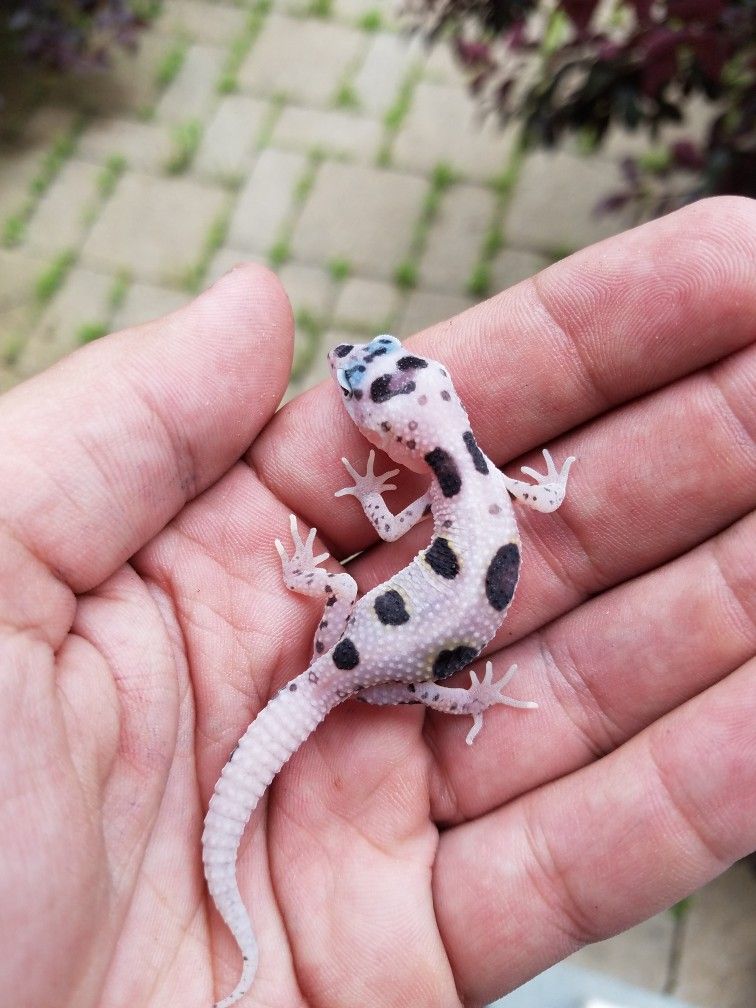 The gecko is happy to use it in the quantities needed for growth and healthy molting. Pour the powder into a small bowl and place on the floor of the terrarium.
The gecko is happy to use it in the quantities needed for growth and healthy molting. Pour the powder into a small bowl and place on the floor of the terrarium.
Vitamin supplements must be dosed. They are dry and liquid. Dry roll a few crickets 1-2 times a week. For pregnant females, slightly increase the portion. Liquid vitamin complexes can be applied to the eyes or the tip of the pet's nose. It is convenient to do this with a soft brush. The animal licks the drops.
The gecko needs clean and fresh water. Place a small bowl at the bottom of the terrarium. Rinse and refill daily. Some individuals like to swim, especially in the heat. Many reptiles stomp in the bowl and then walk around on the mineral feed. Water can be sprayed on the walls of the terrarium. Your pet might enjoy licking the drops off the glass.
Show all offers Show all offers
Important to know
Proper nutrition of a gecko depends not only on food, regime and conditions.